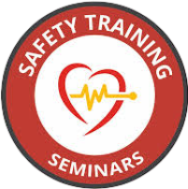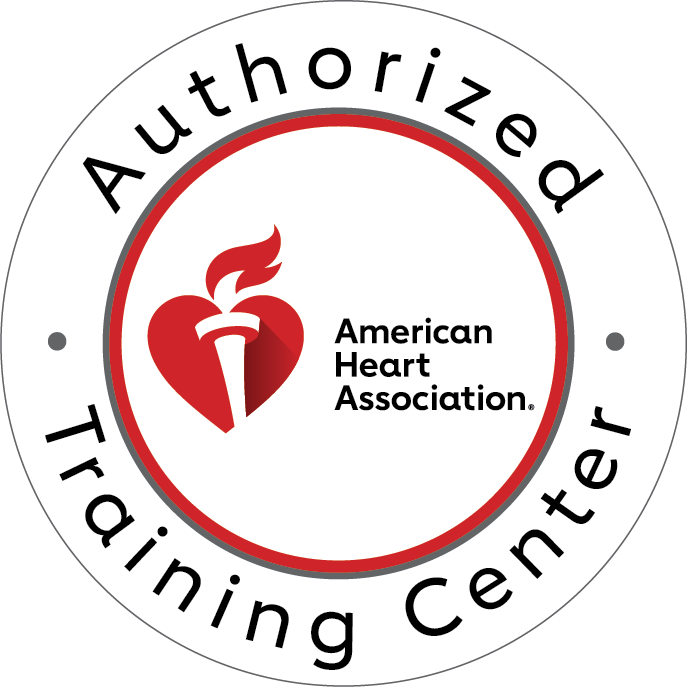CPR, or cardiopulmonary resuscitation, is a life-saving technique used in emergencies when someone’s heartbeat or breathing stops. Despite its effectiveness, several myths surround CPR, leading to misconceptions and hesitations during real-life situations. In this blog post, we’ll debunk common CPR myths, providing clarity and encouraging more people to learn and perform CPR with confidence.
The Myth of the “Perfect CPR Performer”
Anyone Can Perform CPR
Many believe that only trained medical professionals can perform CPR effectively. This is not true. Anyone can learn CPR and make a significant difference during an emergency. Basic CPR involves chest compressions and rescue breaths. These actions are simple and can be learned through brief training sessions or online courses.
Training Is Readily Available
Various organizations offer CPR training, including Safety Training Seminars. These courses often take only a few hours to complete. They provide the skills needed to perform CPR confidently. You don’t need to be an expert to save a life; you just need to be willing to act.
Imperfect CPR Is Better than No CPR
Another myth suggests that imperfect CPR can do more harm than good. This is false. While proper technique is crucial, any attempt at CPR is better than doing nothing. The primary goal is to maintain blood flow to vital organs until professional help arrives. Even if compressions aren’t perfect, they increase the victim’s chances of survival.
Myth of Breaking Ribs During CPR
Chest Compressions Are Essential
People fear breaking ribs while performing CPR. However, chest compressions are essential to pumping blood and oxygen throughout the body. The possibility of rib fractures should not deter you from acting. The benefits of starting CPR far outweigh the risk of rib injuries.
Understanding Proper Pressure
Chest compressions require firm pressure. This ensures the heart is adequately compressed. While there is a slight risk of injury, applying appropriate force is vital for effective CPR. Remember, CPR’s success relies on maintaining circulation, even if ribs crack.
Rib Fractures vs. Saving a Life
In emergencies, the priority is saving a life. Broken ribs or other injuries are secondary concerns. Medical professionals can treat these issues once the victim is stabilized. Immediate CPR can prevent brain damage and increase survival chances significantly.
Mouth-to-Mouth Misconceptions
Rescue Breaths Are Not Always Necessary
A common misconception is that mouth-to-mouth resuscitation is always necessary. Recent guidelines emphasize the importance of hands-only CPR, especially for untrained bystanders. Chest compressions alone can maintain circulation and buy time until professional help arrives.
Performing CPR Without Mouth-to-Mouth
Hands-only CPR involves uninterrupted chest compressions. This method is effective, especially in public settings where rescue breaths might feel uncomfortable. Encouraging hands-only CPR increases the likelihood of bystanders taking action without hesitation.
Knowing When to Use Rescue Breaths
While hands-only CPR is effective, rescue breaths are still recommended in certain situations. These include instances involving children, drowning victims, or drug overdoses. Understanding when to incorporate rescue breaths enhances CPR’s effectiveness.
The Myth of Legal Liability
Good Samaritan Laws Offer Protection
Some hesitate to perform CPR due to fear of legal repercussions. Good Samaritan laws exist to protect those who provide emergency assistance. These laws vary by region but generally shield individuals from liability when acting in good faith.
Providing Aid Within Your Comfort Zone
Good Samaritan laws encourage bystanders to assist without fear. It’s important to act within your knowledge and comfort zone. Even if you’re unsure, attempting CPR is better than doing nothing. Laws recognize the importance of immediate action in emergencies.
Understanding Legal Boundaries
While Good Samaritan laws provide protection, understanding their boundaries is crucial. These laws typically apply when assistance is voluntary and without expectation of reward. Familiarizing yourself with local regulations offers peace of mind during emergencies.
The Myth of CPR Always Resuscitating
CPR Increases Survival Chances
Believing CPR guarantees resuscitation is a misconception. While CPR significantly increases survival chances, it doesn’t always lead to immediate revival. Its primary function is to maintain circulation until professional help arrives.
Understanding CPR’s Role
CPR buys time for emergency responders to arrive and provide advanced care. It’s a crucial link in the chain of survival but not a standalone cure. Understanding this clarifies expectations and emphasizes the importance of initiating CPR promptly.
Recognizing CPR Success Indicators
Success indicators include the victim regaining consciousness or exhibiting normal breathing patterns. However, these signs may not always be present immediately. Persistence and timely intervention are key components of effective CPR.
The Myth of Age Limitations
Children Can Learn CPR
A common myth is that children are too young to learn CPR. This is untrue. Children as young as nine can grasp basic CPR principles. Teaching CPR to children empowers them to act confidently in emergencies, potentially saving lives.
Adapting Techniques for Age and Size
CPR techniques can be adapted for various age groups. For children and infants, compressions require less force. Learning these adaptations ensures proper care for different age groups, increasing the likelihood of successful outcomes.
Encouraging CPR Education for All Ages
Promoting CPR education across all ages strengthens community response capabilities. Schools and community centers often host CPR training sessions. Encouraging widespread participation fosters a culture of preparedness and confidence.
The Myth of Needing Professional Equipment
CPR Requires No Special Tools
Some believe CPR requires special equipment to be effective. This is a myth. Basic CPR relies on chest compressions and, when necessary, rescue breaths. While automated external defibrillators (AEDs) enhance outcomes, they’re not always required.
AEDs and Their Role
AEDs are crucial tools in cardiac arrest situations. These devices deliver an electric shock to restore normal heart rhythms. Many public spaces are equipped with AEDs, and their use is often covered in CPR training courses.
Acting with Available Resources
In emergencies, use available resources to provide assistance. If an AED is accessible, follow its instructions. If not, focus on chest compressions and calling for help. Immediate action is vital, regardless of the tools on hand.
The Myth of Needing to Be Certified
Certification Isn’t Required to Save a Life
A prevalent myth is that certification is necessary to perform CPR. In truth, certification enhances skills and confidence but isn’t required to assist in emergencies. Anyone can initiate CPR with basic knowledge and willingness to act.
Benefits of CPR Certification
While not mandatory, CPR certification offers several benefits. Training provides hands-on experience, boosting confidence and competence. Certified individuals also stay updated on the latest techniques and guidelines.
Encouraging Lifelong Learning
Lifelong learning is essential for staying prepared during emergencies. Regularly attending CPR courses and refreshing knowledge ensures readiness. Encouraging ongoing education promotes a culture of safety and preparedness.
The Myth of CPR Being Too Complicated
CPR Is Simple and Effective
A common myth is that CPR is too complicated for the average person to master. This is far from the truth. CPR’s simplicity lies in its core actions—chest compressions and rescue breaths—which are easy to learn and perform.
Breaking Down the Steps
CPR consists of straightforward steps. Begin by calling for help and ensuring the scene is safe. Then, perform chest compressions at a steady rhythm. Incorporating rescue breaths, if needed, follows clear guidelines and enhances effectiveness.
Overcoming Fear and Hesitation
Fear and hesitation often stem from misconceptions about CPR’s complexity. By debunking this myth, more individuals will feel empowered to take action. Confidence grows through practice and understanding the life-saving potential of CPR.
The Myth of Timing Being Critical
Immediate Action Saves Lives
Timing is crucial in CPR, but perfection isn’t required. Immediate action, even if imperfect, significantly improves outcomes. Delaying intervention due to fear of not being precise can have devastating consequences.
CPR’s Impact on Survival Rates
Studies show that early CPR initiation doubles or triples survival rates. The sooner CPR begins, the better the chances for a positive outcome. Understanding this emphasizes the importance of acting promptly in emergencies.
Time is of the Essence
In emergencies, every second counts. Prioritize calling for help and starting CPR as soon as possible. Remaining calm and focused enhances your ability to provide effective assistance, increasing the chances of a successful outcome.
The Myth of CPR Being Unnecessary in Hospitals
CPR Is Essential Everywhere
A misconception exists that CPR isn’t needed in hospitals. This is false. While medical professionals are present, immediate CPR can make a difference during sudden cardiac events. Timely intervention supports the patient’s recovery process.
Supporting Medical Staff
Initiating CPR can support medical staff while they prepare for advanced interventions. Your actions maintain circulation, buying crucial time for professionals to assess and treat the patient.
Hospitalized Patients and CPR
Even in hospital settings, cardiac arrests can occur unexpectedly. Knowing CPR ensures you’re prepared to assist, whether in a hospital or public setting. Your actions contribute to a comprehensive approach to patient care.
Conclusion
CPR is a powerful tool that saves lives. By debunking these common CPR myths, we hope to inspire more people to learn and perform CPR confidently. Whether you’re a bystander or a healthcare professional, your actions play a critical role in emergencies. Remember, every second counts, and your willingness to act can make all the difference.








